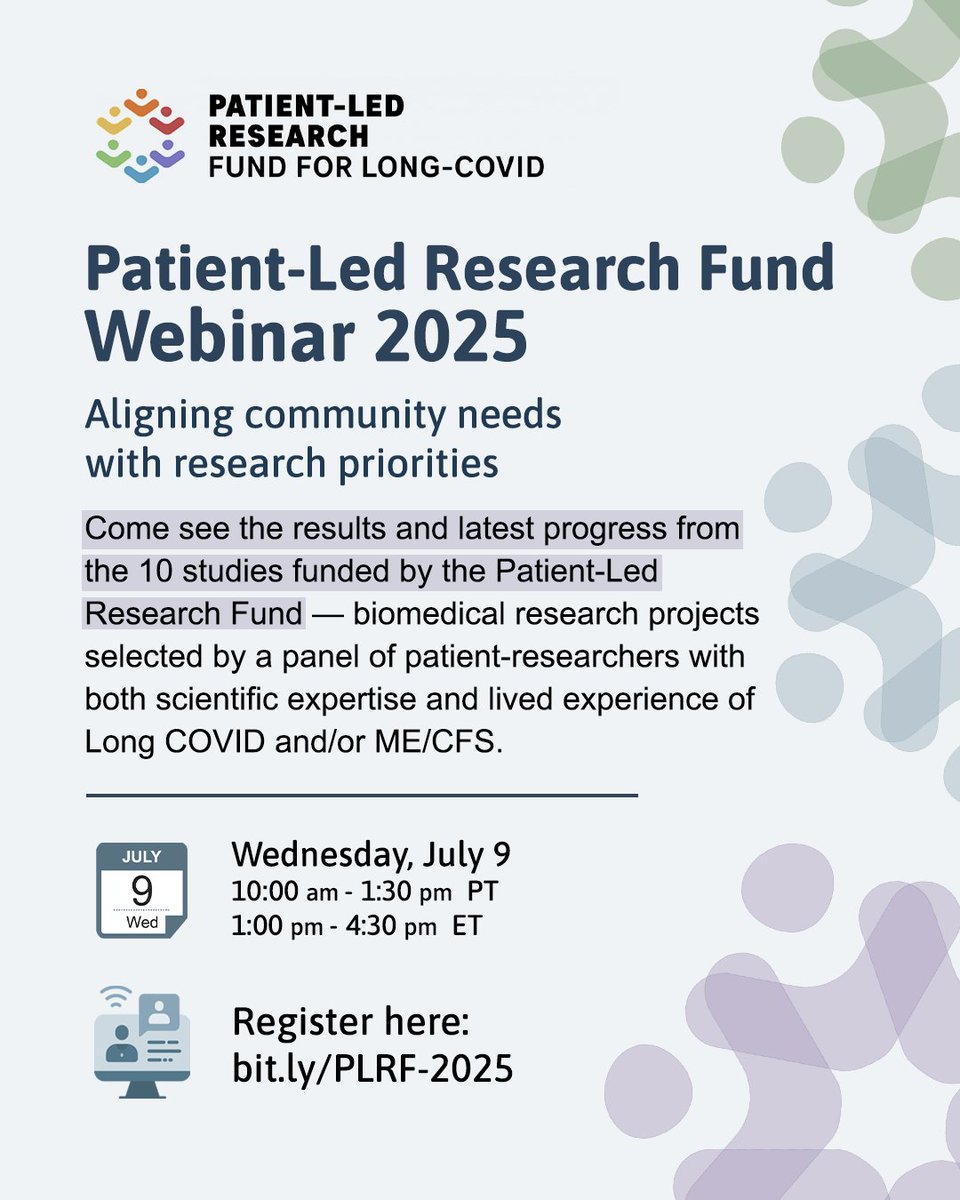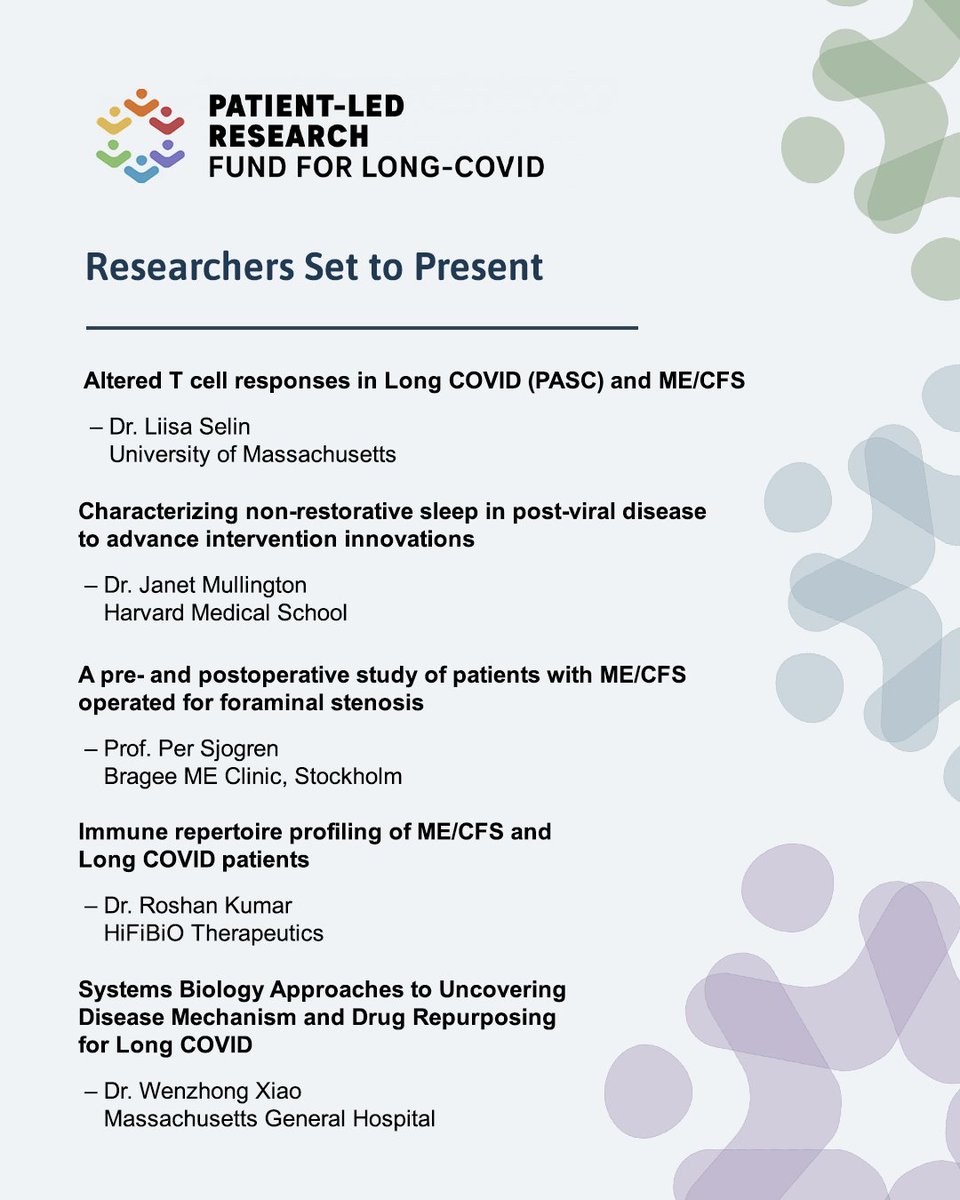We're hosting a Patient-Led Research Fund (PLRF) webinar on July 9, 1–4:30PM ET!
Hear results from 10 PLRF-funded biomedical studies (on microclots, T cell exhaustion, trials, & more), all selected by a panel of patient-researchers.
Register:
#LongCOVID us02web.zoom.us/webinar/regist…


Hear results from 10 PLRF-funded biomedical studies (on microclots, T cell exhaustion, trials, & more), all selected by a panel of patient-researchers.
Register:
#LongCOVID us02web.zoom.us/webinar/regist…



• • •
Missing some Tweet in this thread? You can try to
force a refresh










